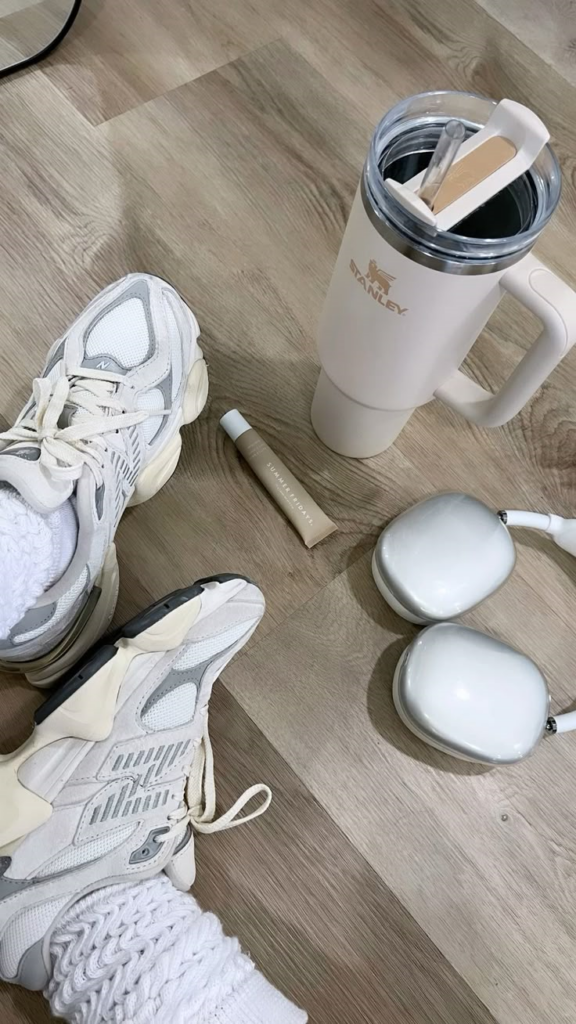Ever wonder how to get into running? If you’re not a runner (yet), the sport can seem a little crazy — even impossible. So many people want to start running, but when they finally try, they often find themselves thinking, “How does anyone enjoy this?”
I’m here to tell you: while getting into running can be uncomfortable at first, it’s actually much easier than you might think.
Why So Many People Run

Before we dive into how to start running, let’s talk about why so many people choose to run in the first place.
From an evolutionary standpoint, humans are built for running. We’re the only primates with specific adaptations that make us excellent long-distance runners compared to other mammals (Mattson, 2012). On a biological level, regular running improves your oxygen-carrying capacity, strengthens your muscles and tendons, and boosts overall physical health (Hughes, 2018). Mentally, runners often experience better moods, improved sleep, and reduced stress levels compared to inactive individuals.
Of course, many runners will tell you the real reason they run is simple: it feels good.
When I first started running in 2023, the idea that running could ever feel pleasant seemed wild. But once I stuck with it, I began experiencing the meditative, almost euphoric benefits firsthand — and now, I can’t imagine my life without it.
If you’re thinking about how to get into running, here’s the advice I wish someone had given me:
1. Run Slow
This is the golden rule for beginners: run slower than you think you should.
Too many people think they need to sprint out of the gate — only to find themselves gasping for air after a minute or two, convinced that running “just isn’t for them.”
In reality, they’re simply running too fast. Most long-distance runners spend the majority of their training at a pace known as Zone 2 — an intensity where you can hold a conversation and breathe comfortably. This pace is key for building cardiovascular endurance.
When I first started, my pace was somewhere around a 15-minute mile — and on a good day! If your comfortable running speed is just a bit faster than a brisk walk, that’s perfectly fine.
Starting slow teaches your body how to breathe properly, builds endurance, and most importantly — makes running feel much less miserable in the beginning.
2. Focus on Time, Not Distance
A common frustration for new runners is not being able to run a mile without stopping. But here’s a secret: distance doesn’t matter right now.
Instead, focus on time.
When I started, my goal was to run for 15–20 minutes without stopping. Reaching that time-based goal gave me a strong sense of accomplishment and helped me build the ability to run continuously.
While distance-based goals (and run/walk intervals) can also be helpful later on, building a solid endurance foundation is easier if you focus on time first.
3. Invest in Good Running Shoes
When I started running, I wore a beat-up pair of Nike Monarchs — great for walking, terrible for running. They were stiff, heavy, and totally unsupportive.
Eventually, I invested in my first real pair of running shoes — Hoka Clifton 9s — and the difference was like night and day. Suddenly, running felt smoother, easier, and way more comfortable.
You don’t need to rush out and buy expensive shoes right away, but if you find yourself sticking with running (especially on concrete), a good pair of running shoes will protect your knees, improve your form, and make running so much more enjoyable.
4. Start Varying Your Training
After about a month or two of consistent running, it’s time to start mixing things up.
You’ll still want most of your runs to be slow, easy recovery runs. But to keep improving, try adding two types of runs into your routine:
- Long runs: Done at an easy pace but for a longer distance or duration, these runs help build endurance and mental toughness.
- Speed runs: These include tempo runs, intervals, or “fartlek” (speed play) runs. They’re tougher, but they’ll make you faster over time.
Adding variety keeps running interesting — and helps you hit new personal milestones.
5. Embrace the Discomfort
Let’s be real: the first few weeks of running are weird.
Your body will freak out. You might feel itchy, nauseous after stopping, or even notice a strange metallic taste in your mouth. Unless you’re feeling sharp pain (which is a red flag), know that these reactions are completely normal and will pass.
Every runner goes through an uncomfortable adjustment period.
Even now, as a seasoned runner, my first mile often lies to me — whispering, “You can’t do this today.” But once I push through that initial discomfort, running starts to feel easy, natural, and, honestly, freeing.
Final Thoughts
Getting into running isn’t about being the fastest or logging crazy distances. It’s about showing up for yourself, running at your own pace, and letting your body adapt over time.
Stick with it through the early discomfort, and you’ll be amazed at what you’re capable of — both on the roads and beyond.
Happy running!
Citations:
- Hughes, David C. et al. “Adaptations to Endurance and Strength Training.” Cold Spring Harbor Perspectives in Medicine, vol. 8, no. 6, 2018, doi:10.1101/cshperspect.a029769.
- Mattson, Mark P. “Evolutionary Aspects of Human Exercise–Born to Run Purposefully.” Ageing Research Reviews, vol. 11, no. 3, 2012, pp. 347–352, doi:10.1016/j.arr.2012.01.007.
